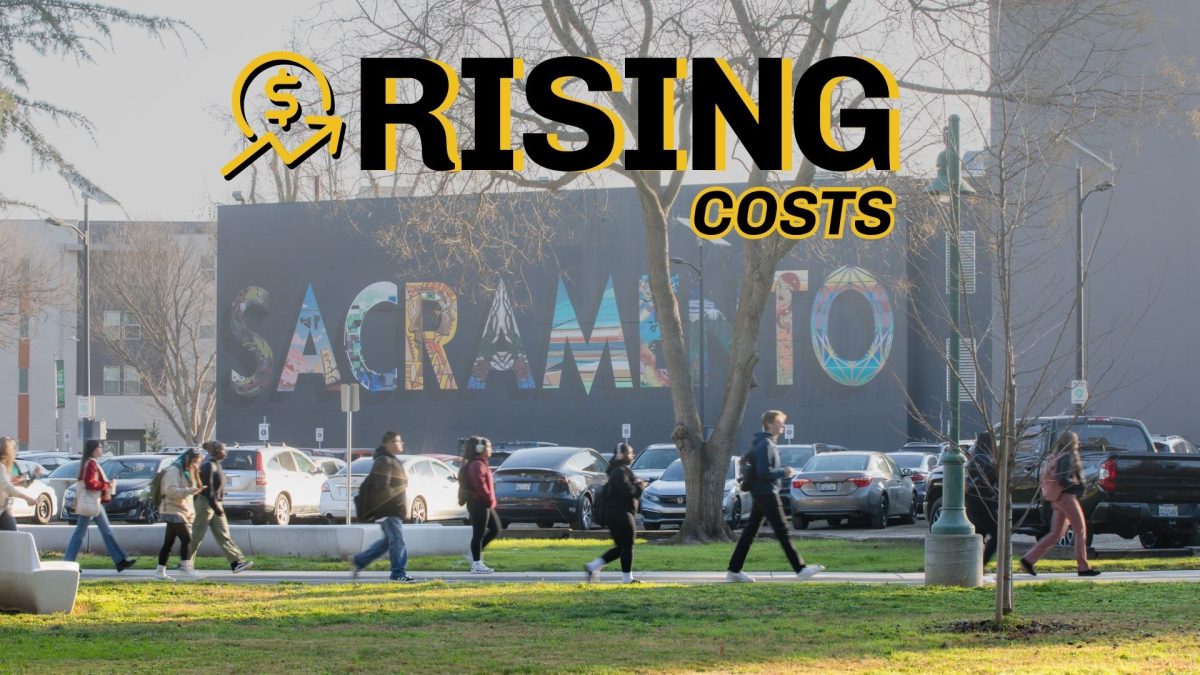New housing plans in review
February 24, 2007
Plans for apartment-style housing on campus could be approved as soon as May 2005, Vice President of Administration and Business Affairs Steve Garcia said.
The additional housing, which would be built near the existing residence halls, is part of President Alexander Gonzalez’s Destination 2010 and is intended to develop a stronger residential campus community.
The Housing Review Board, which consists of six voting members, will review the project feasibility, offering advice with finance and schematic design.
Once the board approves the plans, it will recommend the plans to the Chancellor of the Board of Trustees.
In the summer of 2006, Sacramento State will solicit the project to potential contractors who will place a bid on the project. Garcia is expecting the first phase of the project to cost about $40-50 million.
Fees for on-campus housing have increased by 10 percent in the past two years, but Garcia does not expect any dramatic increases to fund the project. The student dorm fund collects rent from students living on campus and will be used to generate funds to finance the new residence halls.
“The student housing project must generate funds to cover its own cost, but it is not a project to make money,” Garcia said. “We will be vary careful dealing with any increases in the cost for students to live on campus.”
He estimates that students will be able to move into the new dormitory as early as June of 2007.
The first phase of the project will consist of a new residence hall that will house close to 500 students. The new building will be located in place of either the pool area behind Draper Hall or the parking lot in front of Desmond Hall.
Garcia said a decision on the location for the new building would be made within the next month or two depending on the feasibility of use of utilities and power in the area of construction.
The second phase of the project requires taking down one of the oldest dorms in order to replace it with a new one. Foley Hall, Draper Hall and Jenkins
Hall were built in 1959 and are the targets of demolition in the future. Currently the residence halls are at maximum capacity housing 1,100 students according to the census conducted in mid-October. Garcia said that in order to tear any of the buildings down, 1,100 students must be able to remain living in the residence halls.
The new residence hall will have different options for living in order to satisfy different desires of students. Dr. Garcia said that the new building would have apartment-style housing, which will have 500-550 beds available. He said that some units will have four bedrooms and four bathrooms while other rooms will have four bedrooms and two bathrooms.
Some units with double occupancy will also be available, requiring students to share rooms. Both units will also have a common room and a kitchen to be shared by the tenants of each unit.
Garcia said that the dining hall will still be available to students, but he expects some students will rely on their own kitchen to supply and prepare their own food.
Residence halls currently require one residential advisor for every 40 students. In the future, the apartment style housing units will require one residential advisor for every 80 students.
There are many different places to live near and around campus offered to students. Katie Neilson, a sophomore at Sac State, has not lived on campus before and questions if she would do so in the future.
“Apartments on campus are a good idea but students may not like the rules and regulations they’ll have to live under because the apartments are on campus, that would be a reason why I would choose to live off campus,” Neilson said.
Cynthia Cockrill, Director of housing and residential life and member of the Housing Review Board, is also playing an important role in plans for the project and increasing the population of students living on campus.
“I am committed to developing a vibrant campus life and within that commitment, the housing organization and student affairs will be a major contributor in the planning for more campus housing for CSUS students,” Cockrill said. “The development of the new housing is meeting with the goals of Destination 2010.”





















































































































